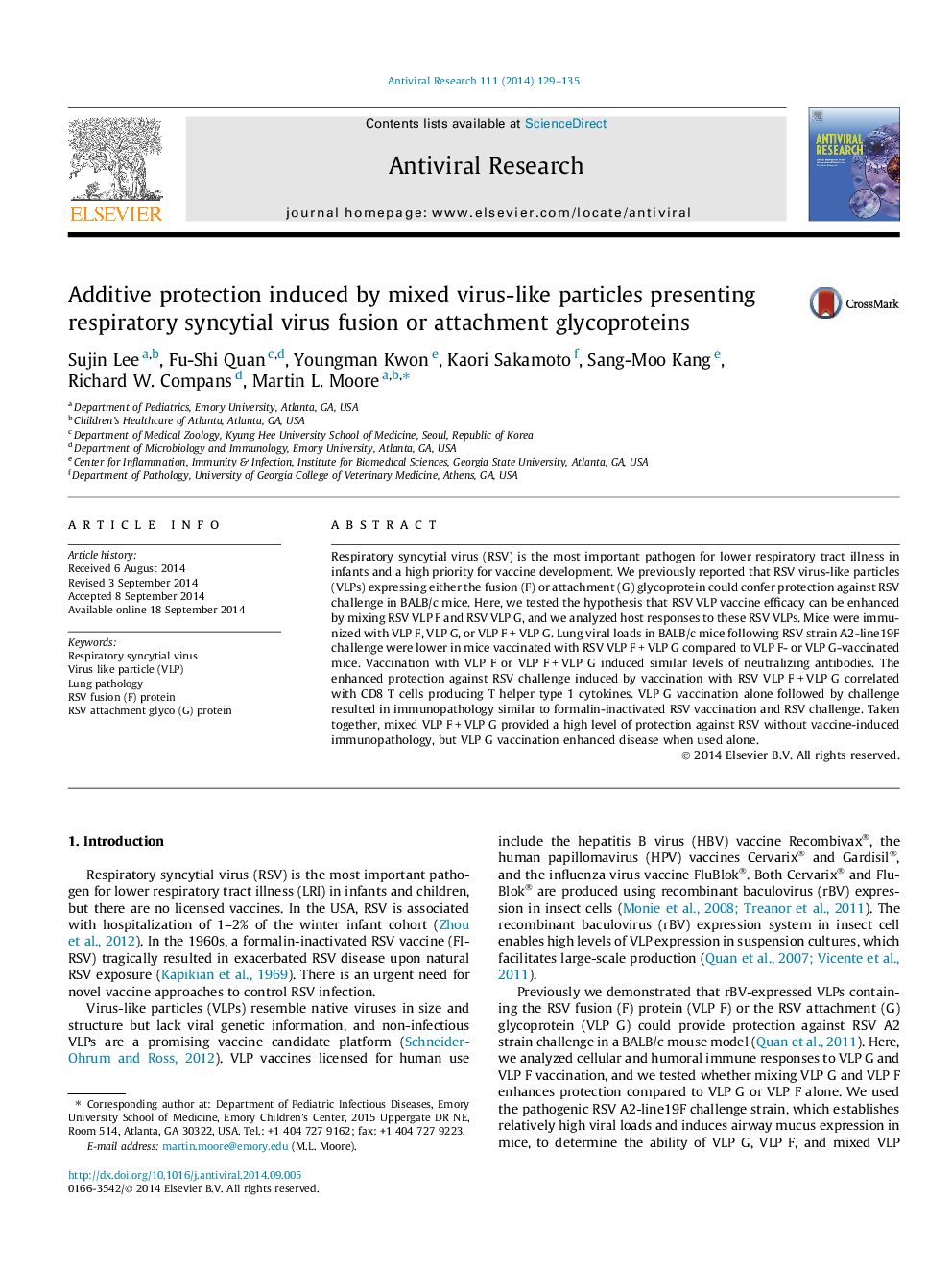| Article ID | Journal | Published Year | Pages | File Type |
|---|---|---|---|---|
| 5822139 | Antiviral Research | 2014 | 7 Pages |
Abstract
Respiratory syncytial virus (RSV) is the most important pathogen for lower respiratory tract illness in infants and a high priority for vaccine development. We previously reported that RSV virus-like particles (VLPs) expressing either the fusion (F) or attachment (G) glycoprotein could confer protection against RSV challenge in BALB/c mice. Here, we tested the hypothesis that RSV VLP vaccine efficacy can be enhanced by mixing RSV VLP F and RSV VLP G, and we analyzed host responses to these RSV VLPs. Mice were immunized with VLP F, VLP G, or VLP FÂ +Â VLP G. Lung viral loads in BALB/c mice following RSV strain A2-line19F challenge were lower in mice vaccinated with RSV VLP FÂ +Â VLP G compared to VLP F- or VLP G-vaccinated mice. Vaccination with VLP F or VLP FÂ +Â VLP G induced similar levels of neutralizing antibodies. The enhanced protection against RSV challenge induced by vaccination with RSV VLP FÂ +Â VLP G correlated with CD8 T cells producing T helper type 1 cytokines. VLP G vaccination alone followed by challenge resulted in immunopathology similar to formalin-inactivated RSV vaccination and RSV challenge. Taken together, mixed VLP FÂ +Â VLP G provided a high level of protection against RSV without vaccine-induced immunopathology, but VLP G vaccination enhanced disease when used alone.
Related Topics
Life Sciences
Immunology and Microbiology
Virology
Authors
Sujin Lee, Fu-Shi Quan, Youngman Kwon, Kaori Sakamoto, Sang-Moo Kang, Richard W. Compans, Martin L. Moore,
